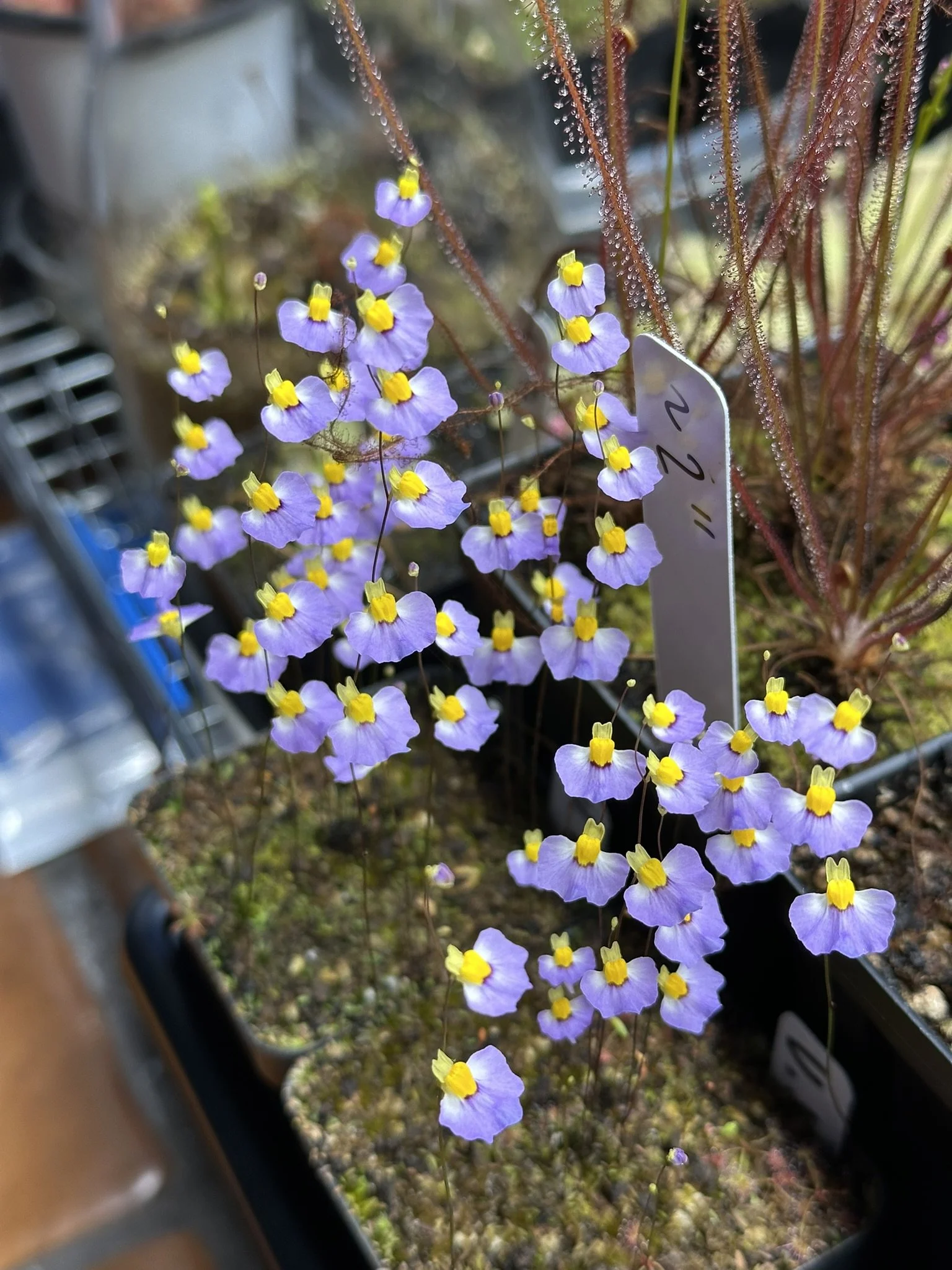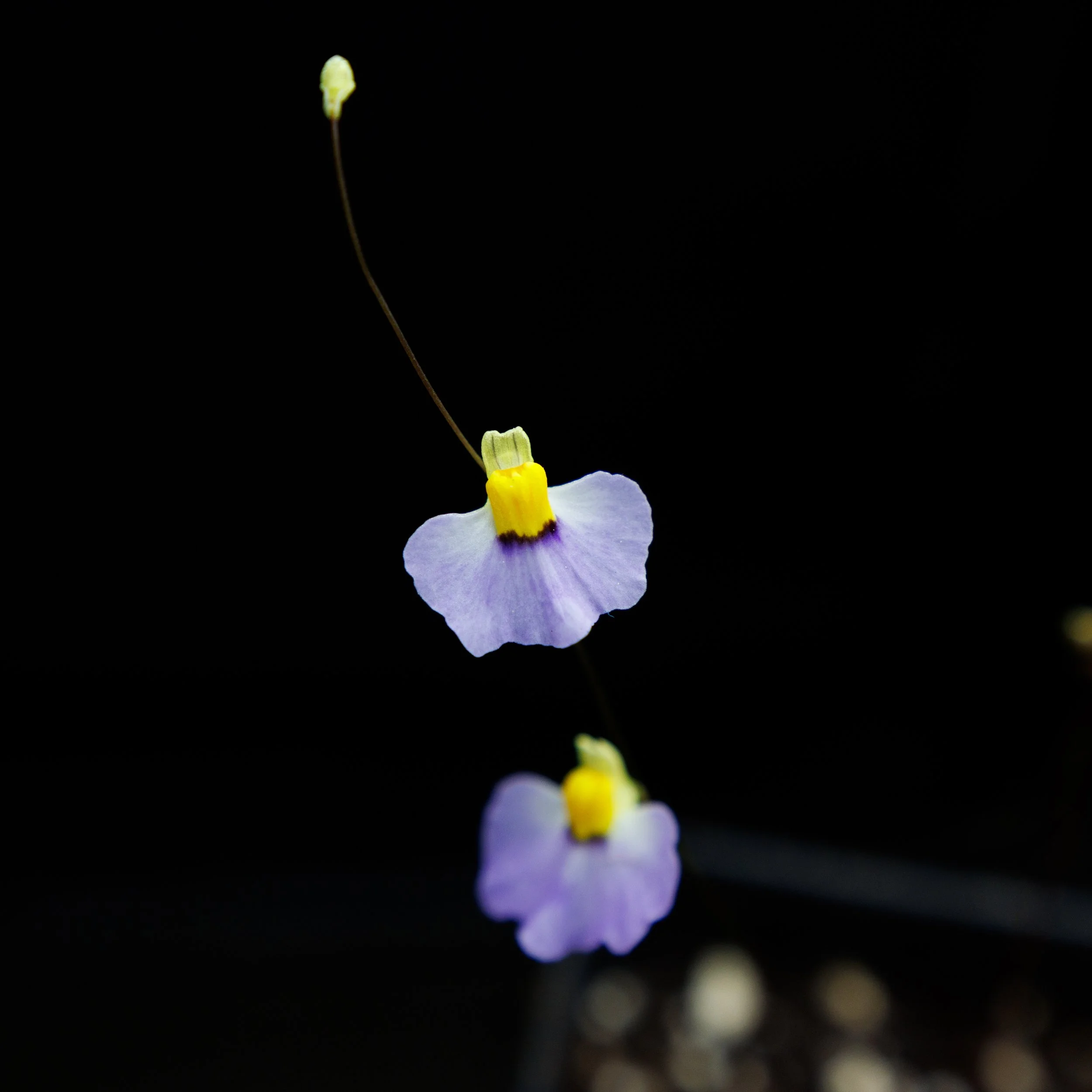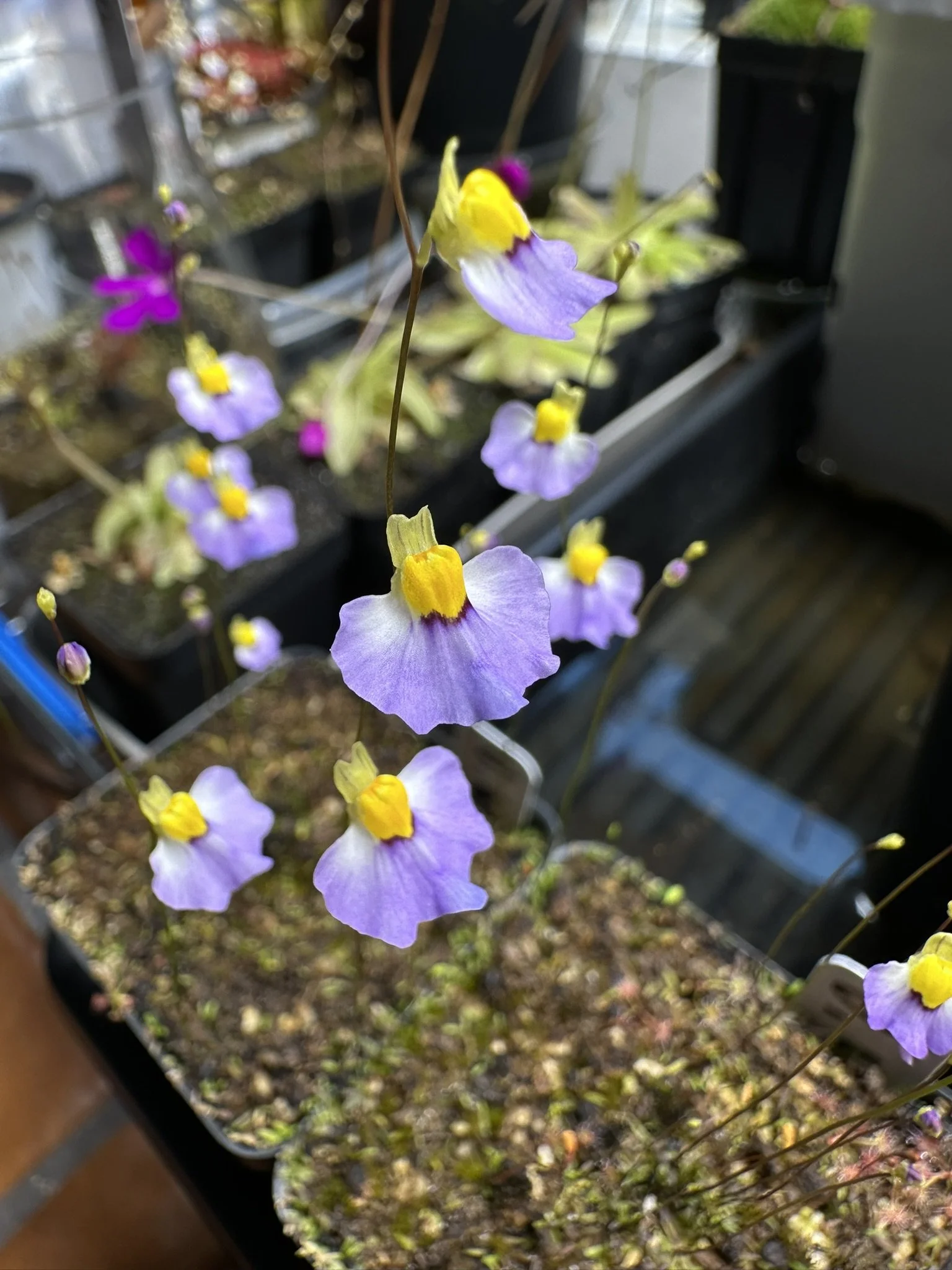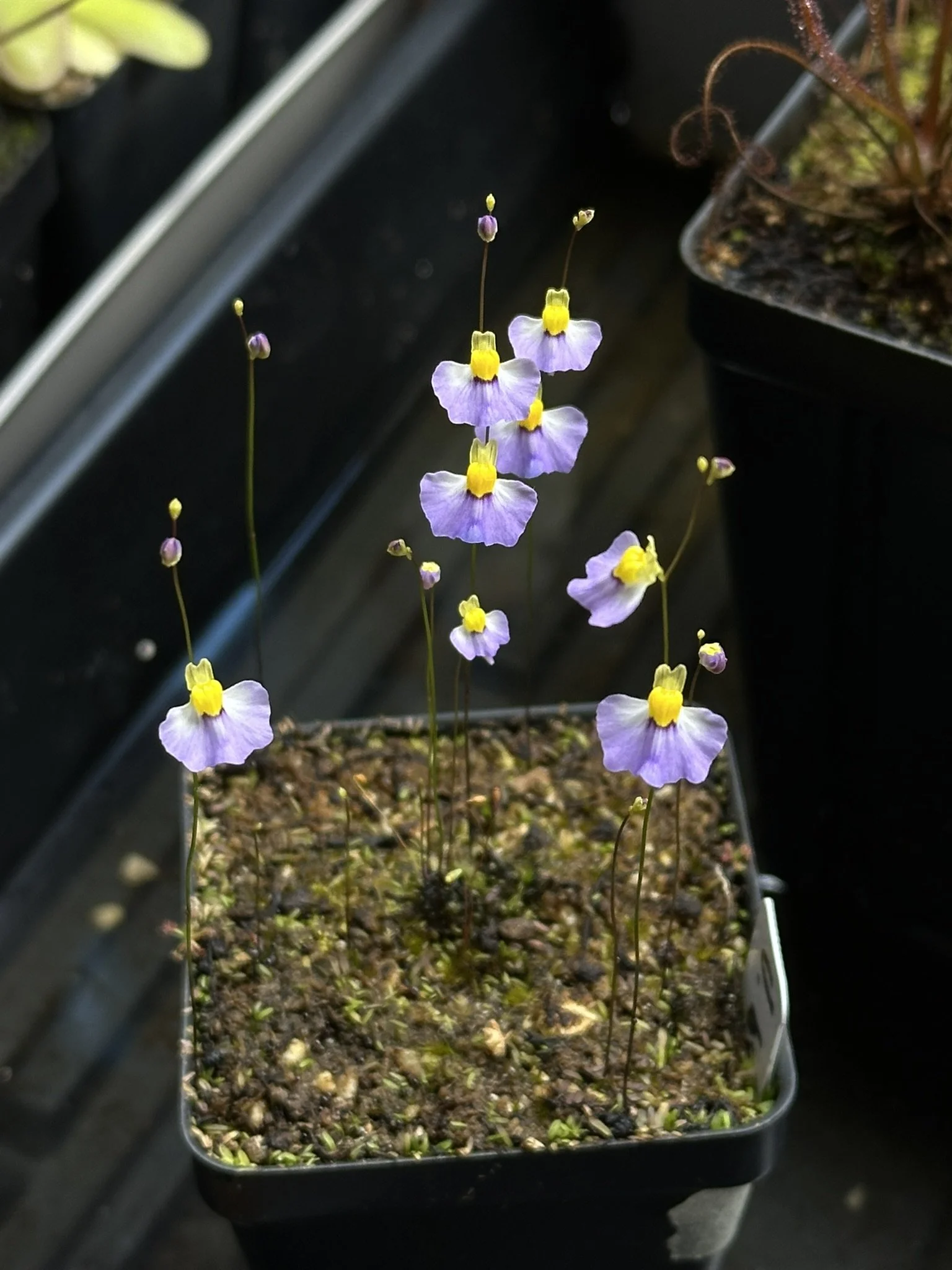 Image 1 of 4
Image 1 of 4

 Image 2 of 4
Image 2 of 4

 Image 3 of 4
Image 3 of 4

 Image 4 of 4
Image 4 of 4





Utricularia bisquamata 'Betty's Bay'
Description
Utricularia bisquamata ‘Betty’s Bay’ is an exceptionally large and beautiful form of bisquamata. It has large, multihued purple and yellow flowers and can flower profusely in a beautiful display (compared to the typical bisquamata in cultivation which has tiny flowers and can be cleistogamous). The traps are subterranean and small, feasting on tiny microscopic creatures, while above ground are thin, grass-like leaves around 1/4-1/2” long. It will readily spread laterally to fill out its pot over time. This form originates from a backyard in Betty’s Bay, Western Cape Province, South Africa.
Plants are potted in 2.5”x 2.5”x 3.5” pots and will be a clump of leaves spreading from the center of the pot. Plants will be flowering sized, but may or may not be flowering at the moment.
WINTER SHIPPING: Cold winter temperatures (<40F) require heat packs which will be automatically included with the shipment if necessary.
Growing Information
Climate: Adaptable to any mild climate. Temperatures between 50-90F are best.
Light: Part Sun, Bright Shade or 10W-15W per sq ft LED light.
Water: Distilled or Reverse Osmosis water only. Use the tray method to keep the soil constantly moist and do not allow it to dry out.
Soil: 50% Peat Moss: 50% Perlite/Sand. Rinse media with distilled or reverse osmosis water to remove excess salts.
Feeding: Feed with MaxSea fertilizer diluted to 1/4 tsp per gallon every month or use Dynagro fertilizer at roughly 200ppm. Lightly spray the leaves but do not overfeed.
Description
Utricularia bisquamata ‘Betty’s Bay’ is an exceptionally large and beautiful form of bisquamata. It has large, multihued purple and yellow flowers and can flower profusely in a beautiful display (compared to the typical bisquamata in cultivation which has tiny flowers and can be cleistogamous). The traps are subterranean and small, feasting on tiny microscopic creatures, while above ground are thin, grass-like leaves around 1/4-1/2” long. It will readily spread laterally to fill out its pot over time. This form originates from a backyard in Betty’s Bay, Western Cape Province, South Africa.
Plants are potted in 2.5”x 2.5”x 3.5” pots and will be a clump of leaves spreading from the center of the pot. Plants will be flowering sized, but may or may not be flowering at the moment.
WINTER SHIPPING: Cold winter temperatures (<40F) require heat packs which will be automatically included with the shipment if necessary.
Growing Information
Climate: Adaptable to any mild climate. Temperatures between 50-90F are best.
Light: Part Sun, Bright Shade or 10W-15W per sq ft LED light.
Water: Distilled or Reverse Osmosis water only. Use the tray method to keep the soil constantly moist and do not allow it to dry out.
Soil: 50% Peat Moss: 50% Perlite/Sand. Rinse media with distilled or reverse osmosis water to remove excess salts.
Feeding: Feed with MaxSea fertilizer diluted to 1/4 tsp per gallon every month or use Dynagro fertilizer at roughly 200ppm. Lightly spray the leaves but do not overfeed.